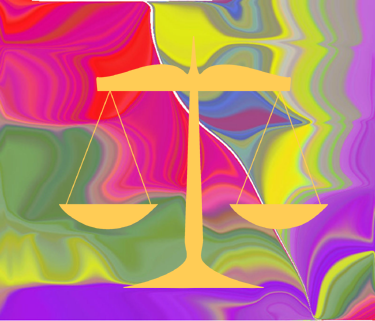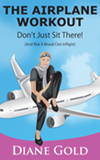Balance In Our Lives
BALANCE IN OUR LIVES (ISSUE 168) MARCH 3, 2015
By Diane Gold
 Balance in our lives seems like a “played out” expression, verbal hype that marketers, coaches or therapists (sometimes hard to tell them apart until we look at their wall) use to lure us into buying their coaching programs. But the reason so many people seek out the programs (like warriorsofweight-consulting), even if advertising leads us to them, is that many of us don’t have a system that works.
Balance in our lives seems like a “played out” expression, verbal hype that marketers, coaches or therapists (sometimes hard to tell them apart until we look at their wall) use to lure us into buying their coaching programs. But the reason so many people seek out the programs (like warriorsofweight-consulting), even if advertising leads us to them, is that many of us don’t have a system that works.
THE BALANCE FORMULA
I believe that we each need some sort of balance formula, a set of categories within our systematic approach to living our best life. For me, today, I have included:
1) body-mind rest and renewal, without which we are not good to ourselves or others;
2) support and love from family and friends, without which we stagnate;
3) a satisfying way to be creative, without which we leave our artist untapped;
4) a satisfying way to self-sustain, without which we are less productive (please note that not everyone needs to have a job or career; some choose to trade services; others choose adventures other than the regular work model);

5) something spiritually rooting, without which we look for a root;
6) non-chemical, non-polluting nutrition, which means without plastic and metal leaching from cookware and dishware, which means no genetic modification in the seeds, which means no type of food that causes global depletion (such as methane run off from livestock, dead zones from overfishing, soil depletion and desertification of land from animal grazing in dairy farms or cattle ranches) which leaves us with organic plant-based food;
7) ethics, music, art, without which we are not whole human beings;
8) joyful physical activity, without which we do not stimulate our body’s systems to stay healthy.
Which ones of mine are yours?
PLEASE NOTE
This formula does not include shelter and clothing, although these are quite necessary. It also does include something spiritual which does include self-esteem and other things that do not have to do with our physical nature. It is a general outline.
Suffice it to say there is no one right way or best way. I prefer this way, you prefer that way, she prefers a completely different way and he prefers a combination of yours and hers. The idea is to have one, or, at least, think about developing one. It’s handy, not too tough to create and comes in, oh, so handy, on a daily basis.
We may have heard someone say,
“I’m missing something,”
or
“I feel like there’s a hole inside me.”
Even the expression,
“I have to get myself together,”
means a gathering of behaviors, reactions and choices so that we more clearly live our best vision of and for ourselves and others at that point in time and onward.
We all feel, at least, a little as if we have to make some adjustment at one time or other. It’s part of the process we go through where we reshuffle ourselves to become more (here comes the word again) in balance, where we make personal changes to become more supportive of our goals and ourselves.
THE WHEEL OF BALANCE
We can almost think of the formula as a wheel of balance with each category a spoke. What I would put in as the categories that we need to balance life are these. As I said before, each of us may differ; although, we, humans, are not all that different and most of us would include these in our list.
MAKING ADJUSTMENTS: OUR ACTION STEP
Now that we have an infrastructure, a framework, an outline from which to work; we can decide what to keep, what to add, what to omit. So let’s self-evaluate, slowly, consistently and on a continual basis. Once we get ourselves in balance, we change. And we actually do change daily. So, it would make sense to go through this process frequently to see whether the balance in our lives required major or minor tailoring.
A good example might be for us to look at an aircraft in the wind. Whether it’s a hang glider or a jet, as the wind changes, which it does continually, the pilot makes changes to accommodate it, from mini-changes all the way up to rerouting or not flying.
This adjustment is something we should look at daily. It will serve us well.
CONCLUSION
 The balance in our lives is really a process. It’s not one place we obtain and stay. As with the wind, there are always new goals, new conditions, new feelings, new advantages, new obstacles for which or from which to adapt.
The balance in our lives is really a process. It’s not one place we obtain and stay. As with the wind, there are always new goals, new conditions, new feelings, new advantages, new obstacles for which or from which to adapt.
Whether we compromise to accommodate a loved one or change a spiritual outlook or activity; it is important to include the entire assortment. In the meantime while each person is figuring out balance in our lives, the outline above is a starting point.
ANOTHER NOTE
I always say I am a better editor than I am a writer. In seeing the balance in our lives wheel, above, I immediately began to edit it. But, when we put too many things in, we get lost in the weeds.
So this is good for now. I’m sure tomorrow, I will see something new because I will be new. And so will you.
![]()
If you wish to share your story, please hit reply in your email program to be contacted.
If you need habit help, go to warriorsofweight-consulting.
![]()
FEEDBACK
We value your feedback very much.
Please leave a comment below.
Please LIKE us on the website and at
WarriorsOfWeight on Facebook.
You can also follow us on Twitter: @warriorsoweight.
Thanks.
![]()
DIANE GOLD, PUBLISHER AND AUTHOR
Diane Gold, Founder of Warriors of Weight, Turning Habits Into Health, is a mentor in tai chi, kung fu and meditation, a music, fitness and stress expert, dedicated mom, studying peaceful conflict resolution and habit replacement, certified in Whole-Foods Plant-Based Nutrition.
She believes that small, consistent changes in our lives mount to ever improving quality of life improvements. She says,
“If we are consistent and relaxed, we will make ourselves more fluid, more powerful, more meaningful, more healthy than the day before.
“We each look at life from a different perspective. Most of us require similar things, though: love from other people, creativity, productivity, music, art, fitness and a way to make some sort of difference. We each decide how to balance ourselves.
“And, then, there’s the great opportunity. We can make changes at any time. As we feel the need, we change to support our own balance.
“In the meantime, let us all take good care of ourselves, because we are so worth it!”![]()

 Let’s talk about Extinction and Loss Of Species, and are we responsible?
Let’s talk about Extinction and Loss Of Species, and are we responsible? There needs to be a correction, and also modification of a particular concept, to the recently published article I had written for the North American Vegetarian Society (“Meat: no longer just a factory farm issue” in Vegetarian Voice 2012) regarding biodiversity loss.
There needs to be a correction, and also modification of a particular concept, to the recently published article I had written for the North American Vegetarian Society (“Meat: no longer just a factory farm issue” in Vegetarian Voice 2012) regarding biodiversity loss. 1) We are losing species of life as well as ecosystems on Earth at an unprecedented and alarming rate, estimated to be anywhere between 1,000 and 10,000 times the “background rate”—that which had been seen for the previous several thousands of years. Therefore, it is this massive rate of extinction rather than number of loss that becomes a more meaningful metric and cause for concern.
1) We are losing species of life as well as ecosystems on Earth at an unprecedented and alarming rate, estimated to be anywhere between 1,000 and 10,000 times the “background rate”—that which had been seen for the previous several thousands of years. Therefore, it is this massive rate of extinction rather than number of loss that becomes a more meaningful metric and cause for concern. 2) It is difficult, if not impossible, to accurately predict the number of species loss per year because of a number of factors. One of the largest unknowns is the exact amount of species that we have on earth, which is a needed component when attempting to determine total numbers of species loss when using an extinction prediction equation. This is one of the reasons the Species Area Curve Relationship method of extinction calculation has led to speculation and wide ranges of numbers of extinct species.
2) It is difficult, if not impossible, to accurately predict the number of species loss per year because of a number of factors. One of the largest unknowns is the exact amount of species that we have on earth, which is a needed component when attempting to determine total numbers of species loss when using an extinction prediction equation. This is one of the reasons the Species Area Curve Relationship method of extinction calculation has led to speculation and wide ranges of numbers of extinct species. There has been widespread thought that marine species were more resilient to extinction and our further exploitation. However, there is finally a growing amount of evidence that fish and wildlife in our oceans are as, or more, vulnerable to extinction than many terrestrial and freshwater species. Extinction – Fish Vulnerable To Extinction
There has been widespread thought that marine species were more resilient to extinction and our further exploitation. However, there is finally a growing amount of evidence that fish and wildlife in our oceans are as, or more, vulnerable to extinction than many terrestrial and freshwater species. Extinction – Fish Vulnerable To Extinction
 Most of us consume plastics in food. We don’t set out to do it, but some of our plastic technology disintegrates into our food and, therefore, into our blood.
Most of us consume plastics in food. We don’t set out to do it, but some of our plastic technology disintegrates into our food and, therefore, into our blood. Bisphenol A (BPA) is a chemical that has been studied to find that it can disrupt estrogen. It is found as one of the ingredients in many plastics.
Bisphenol A (BPA) is a chemical that has been studied to find that it can disrupt estrogen. It is found as one of the ingredients in many plastics. The National Congress Of Legislatures lists the following:
The National Congress Of Legislatures lists the following: Phthalates are chemicals used in plastic to make it softer or more pliable. Picture one of those IV bags up on a pole that we see on TV or have received in the hospital to get fluids or medicine. The ones in the hospital contain DEHP, diethylhexyl phthalate. It makes the plastic less stiff so bags can be made with thickness to insure non-breakage.
Phthalates are chemicals used in plastic to make it softer or more pliable. Picture one of those IV bags up on a pole that we see on TV or have received in the hospital to get fluids or medicine. The ones in the hospital contain DEHP, diethylhexyl phthalate. It makes the plastic less stiff so bags can be made with thickness to insure non-breakage. Why would no company or agency do research on whether or not plastics are safe? The answer has to do with, you may have guessed it, profit. If companies did research about plastics in food, chances are, someone would hear about it and publish the results The big D companies and the conglomerate cookware companies don’t want to do any research that might show their products are dangerous. They also discourage others from doing them.
Why would no company or agency do research on whether or not plastics are safe? The answer has to do with, you may have guessed it, profit. If companies did research about plastics in food, chances are, someone would hear about it and publish the results The big D companies and the conglomerate cookware companies don’t want to do any research that might show their products are dangerous. They also discourage others from doing them. To be more productive and love it more, (1), because we actually will be making a critical difference and (2), because we will be having a great time doing it, is a common aspiration. Who can make that happen, though? There are so many compromises and lots of complicated layers to everything.
To be more productive and love it more, (1), because we actually will be making a critical difference and (2), because we will be having a great time doing it, is a common aspiration. Who can make that happen, though? There are so many compromises and lots of complicated layers to everything. Let’s say we wish to manage a project, but no one has assigned us this role. We can create our own project so that we create our own role as project manager. This can be done as part of what we do for our daily livelihood or as our own personal project. It can be for 1 minute a day. Everyone has that much time. It can also be for an hour.
Let’s say we wish to manage a project, but no one has assigned us this role. We can create our own project so that we create our own role as project manager. This can be done as part of what we do for our daily livelihood or as our own personal project. It can be for 1 minute a day. Everyone has that much time. It can also be for an hour. When we make our own food, we are caring for ourselves. We get to create nutritious art plus we get to make ourselves healthy by choosing ingredients that include vitamins, minerals, nutrients and phytonutrients that fortify us from harm and make us strong.
When we make our own food, we are caring for ourselves. We get to create nutritious art plus we get to make ourselves healthy by choosing ingredients that include vitamins, minerals, nutrients and phytonutrients that fortify us from harm and make us strong.

 This one seems easy. Because we have such full days, we sometimes tend to overdo it before settling down to sleep. At these times, we might find we have not left enough sleep time to feel rested and awesome for our next day.
This one seems easy. Because we have such full days, we sometimes tend to overdo it before settling down to sleep. At these times, we might find we have not left enough sleep time to feel rested and awesome for our next day. 5 Ways To Improve Your Health And Mine will pick areas that are commonly important to us all. How can we go wrong with these options? Feeling healthy makes us feel happier, be more self-sufficient, be stronger on a daily basis, build our body’s foundation and position ourselves for a longer life. So, let’s consider whatever of these ways makes sense and add one to our lives for the new year.
5 Ways To Improve Your Health And Mine will pick areas that are commonly important to us all. How can we go wrong with these options? Feeling healthy makes us feel happier, be more self-sufficient, be stronger on a daily basis, build our body’s foundation and position ourselves for a longer life. So, let’s consider whatever of these ways makes sense and add one to our lives for the new year. Obviously, we are involved in breathing all day. The body regulates this action automatically, if we don’t. But we can pay deliberate attention to it for extra health. When we slow down and pay attention to the air that goes in and the air that comes out, we build up life energy, almost as if we are storing valuables in a vault. Not much time is needed here, either. Just consistency.
Obviously, we are involved in breathing all day. The body regulates this action automatically, if we don’t. But we can pay deliberate attention to it for extra health. When we slow down and pay attention to the air that goes in and the air that comes out, we build up life energy, almost as if we are storing valuables in a vault. Not much time is needed here, either. Just consistency. Water is crucial. The more fruits and veggies we eat, the more water we have to drink as water. As long as we keep our body’s water balanced, 65% of our body mass, we will be in good shape. The body has water inside our cells, called intracellular fluid. It also has water outside the cells, extracellular fluid, such as water in blood, spine, stomach, both of which have to be kept balanced. Food and salt intake concentrate the “out of cell” fluid while less dilute it.
Water is crucial. The more fruits and veggies we eat, the more water we have to drink as water. As long as we keep our body’s water balanced, 65% of our body mass, we will be in good shape. The body has water inside our cells, called intracellular fluid. It also has water outside the cells, extracellular fluid, such as water in blood, spine, stomach, both of which have to be kept balanced. Food and salt intake concentrate the “out of cell” fluid while less dilute it. The great news about stretching is that we can do it almost anywhere. We have joints that move while we are stationary, so we can think of a body part and begin to move it. Moving it brings heat, blood with life-sustaining oxygen, and flexibility. We do not need any special exercise.
The great news about stretching is that we can do it almost anywhere. We have joints that move while we are stationary, so we can think of a body part and begin to move it. Moving it brings heat, blood with life-sustaining oxygen, and flexibility. We do not need any special exercise. In the past several decades, in the United States, there has been talk about superfoods. The word, superfoods, has been so overused by the nutritional supplement industry that it’s hard to know what’s marketing and what’s science.
In the past several decades, in the United States, there has been talk about superfoods. The word, superfoods, has been so overused by the nutritional supplement industry that it’s hard to know what’s marketing and what’s science. Whether we sleep alone or together, taking a short moment to put a smile into ourselves before we fall asleep will cause relaxed mind and muscles and make for good dreams and restful sleep.
Whether we sleep alone or together, taking a short moment to put a smile into ourselves before we fall asleep will cause relaxed mind and muscles and make for good dreams and restful sleep. The Airplane Workout
The Airplane Workout There are 815 million U.S. travelers per year (rita.dot.gov), meaning 135,000 are subject to clotting in flight . According to hopkinsmedicine.org, 3% end up with a pulmonary embolism that ends up in death. That’s 4,000 people per year in the U.S. alone who could die from a clot that originated on an airplane.
There are 815 million U.S. travelers per year (rita.dot.gov), meaning 135,000 are subject to clotting in flight . According to hopkinsmedicine.org, 3% end up with a pulmonary embolism that ends up in death. That’s 4,000 people per year in the U.S. alone who could die from a clot that originated on an airplane.
 Let’s talk about how we perceive the flight itself. Most of us figure we can get some rest, listen to music, engage in friendly talk with our neighbor, or do some business with no interruption. We could also dedicate our time to eating genetically modified peanuts, full of the worst kind of salt, as we progress along on our journey.
Let’s talk about how we perceive the flight itself. Most of us figure we can get some rest, listen to music, engage in friendly talk with our neighbor, or do some business with no interruption. We could also dedicate our time to eating genetically modified peanuts, full of the worst kind of salt, as we progress along on our journey. When we think about it, airplane time is the perfect arena for tuning up on fitness. There isn’t the distraction of other gym goers with whom to compare or socially pursue. There isn’t a lot of space to divert our attention. We can’t leave. And we don’t need any equipment.
When we think about it, airplane time is the perfect arena for tuning up on fitness. There isn’t the distraction of other gym goers with whom to compare or socially pursue. There isn’t a lot of space to divert our attention. We can’t leave. And we don’t need any equipment.
 AT PEACE WITH DIANE GOLD
AT PEACE WITH DIANE GOLD 

 When we went to buy tomatoes, we never thought about why they were shiny. We just thought they came that way. To this day, most people don’t know that most produce, including that which is certified organic, is sent to the finishing plant after the grower and before the retailer. It gets packaged for resale using lots of different questionably safe plastics. Plus, it often gets a coating that keeps the moisture in that we commonly refer to as vegetable or fruit wax.
When we went to buy tomatoes, we never thought about why they were shiny. We just thought they came that way. To this day, most people don’t know that most produce, including that which is certified organic, is sent to the finishing plant after the grower and before the retailer. It gets packaged for resale using lots of different questionably safe plastics. Plus, it often gets a coating that keeps the moisture in that we commonly refer to as vegetable or fruit wax. The Food and Drug Administration is responsible for the safety of food and drugs. Unfortunately, they are given information by industry giants aka Big Food, that may force them to allow certain chemical processes whose studies were not extensive enough to show the long-term risks. The FDA cares about protecting us from pathogens, like clostridium botulinum. Big Food & Chemical companies show them expensive studies where such and such a product, be it plastic wrapping or modification of the air used in packaging and storing or transporting, are safe for the consumer; the FDA approves this “finishing” process because they have seen the studies. Too bad the studies don’t go far enough.
The Food and Drug Administration is responsible for the safety of food and drugs. Unfortunately, they are given information by industry giants aka Big Food, that may force them to allow certain chemical processes whose studies were not extensive enough to show the long-term risks. The FDA cares about protecting us from pathogens, like clostridium botulinum. Big Food & Chemical companies show them expensive studies where such and such a product, be it plastic wrapping or modification of the air used in packaging and storing or transporting, are safe for the consumer; the FDA approves this “finishing” process because they have seen the studies. Too bad the studies don’t go far enough. We know that in some of our bags, even in the super food bags with my maca or my cacao, there are little bags of alien origin in them to absorb moisture. Why isn’t the contents of this desiccant made known to us? We have heard it’s made of silicon which is supposed to be food safe, according to the current research, but what about the covering? How many sets of fingers have been on that little bag, or how many kinds of oils were on the conveyer belt it rode down?
We know that in some of our bags, even in the super food bags with my maca or my cacao, there are little bags of alien origin in them to absorb moisture. Why isn’t the contents of this desiccant made known to us? We have heard it’s made of silicon which is supposed to be food safe, according to the current research, but what about the covering? How many sets of fingers have been on that little bag, or how many kinds of oils were on the conveyer belt it rode down?
 What’s on your produce is a huge question for many of us, especially if we are brought up believing what we see on our fruits and vegetables. For those of us who know full well that we are eating pesticides and wax, there are still surprises. For many, we are not aware of any of the standard ways the fruit and vegetable supply chain works. We are also confused about why organic food matters and what all this talk has to do with our health.
What’s on your produce is a huge question for many of us, especially if we are brought up believing what we see on our fruits and vegetables. For those of us who know full well that we are eating pesticides and wax, there are still surprises. For many, we are not aware of any of the standard ways the fruit and vegetable supply chain works. We are also confused about why organic food matters and what all this talk has to do with our health. Fruits and vegetables produce a ripening hormone called ethylene. Plants are categorized into two categories: those that ripen after harvest (climacteric species), such as avocados or peaches, and those that do not like oranges or spinach (non-climacteric plants). The ripening process produces a hormone called ethylene, commonly known, not surprisingly, as the ripening hormone. All plants off-gas this substance, but some (the climacteric plants) produce more.
Fruits and vegetables produce a ripening hormone called ethylene. Plants are categorized into two categories: those that ripen after harvest (climacteric species), such as avocados or peaches, and those that do not like oranges or spinach (non-climacteric plants). The ripening process produces a hormone called ethylene, commonly known, not surprisingly, as the ripening hormone. All plants off-gas this substance, but some (the climacteric plants) produce more. So, when a fruit or vegetable is harvested, it goes through a cycle of maturation, or ripening, and then begins senescence, which is its final stage of life. We might wonder about this wax and its safety, but we should be aware that it exists.
So, when a fruit or vegetable is harvested, it goes through a cycle of maturation, or ripening, and then begins senescence, which is its final stage of life. We might wonder about this wax and its safety, but we should be aware that it exists.


 So, there are toxic chemicals being off-gassed from the fertilizer industry which is used on fruits and vegetables that don’t call themselves organic. There’s lots of methane from using cow waste in the soil and from cow waste that sits stagnantly.
So, there are toxic chemicals being off-gassed from the fertilizer industry which is used on fruits and vegetables that don’t call themselves organic. There’s lots of methane from using cow waste in the soil and from cow waste that sits stagnantly. To find out what’s on my produce and your produce is very much a maze. If we are not professional growers, we don’t actually know about many of the items mentioned above. To find out the information is usually no one’s job but our own.
To find out what’s on my produce and your produce is very much a maze. If we are not professional growers, we don’t actually know about many of the items mentioned above. To find out the information is usually no one’s job but our own. If you buy at a local large store, go to the produce department and ask what kind of wax is on your favorite fruits and vegetables. Be persistent since the grocer, most likely, will not know and will say she has no way to find out that information. To cut the process down for you, get the phone number to the store’s regional warehouse. There, ask for the produce buyer. This will start the process of someone’s doing some research for you.
If you buy at a local large store, go to the produce department and ask what kind of wax is on your favorite fruits and vegetables. Be persistent since the grocer, most likely, will not know and will say she has no way to find out that information. To cut the process down for you, get the phone number to the store’s regional warehouse. There, ask for the produce buyer. This will start the process of someone’s doing some research for you.





